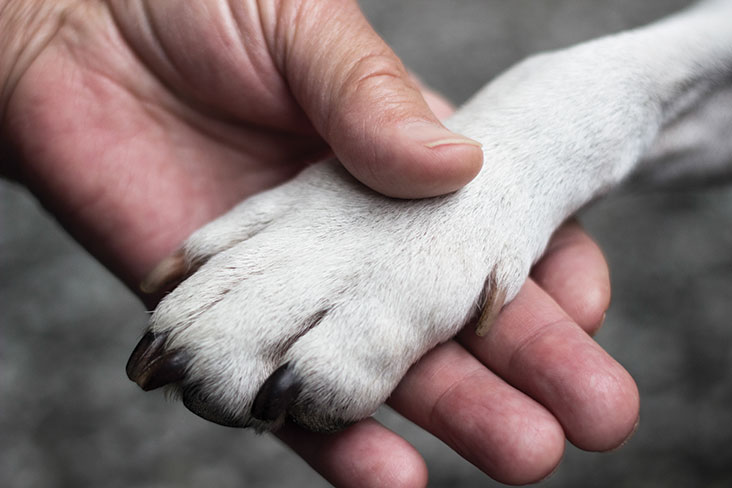Unleashed: Caring for Your Dying Pet

Local professional answers the tough questions.
There’s nothing more difficult than seeing the furry friend you love in pain. You want that affectionate, healthy kitten you once had, or that rambunctious, strong puppy that was always chasing you around the house. Unfortunately, there often comes a time in a pet’s life when that pain means it’s time to let go.
Bruce Baker, co-founder and hospital manager of Pet Center Ltd., answers some of the tough questions related to our pet’s last days.
How will I know if my pet is in pain?
According to Baker, you can usually tell if your pet is in pain by the way they’re acting and how they’re walking. Are they struggling to do their usual everyday activities? Are they having trouble getting up? Are they whimpering, snapping, or growling when you try to pick them up? Are they stiff or sore?
Cats often go off by themselves and find a place to hide; they’re notorious for hiding pain, so sometimes it can be hard to tell. Symptoms can be progressive, making it hard for pet owners to recognize when their pet is in pain and when to act.
“A lot of the times, the owner is the best one to see it,” Baker says. “Every situation is different, and you just have to take it as it goes.”
What are my options?
A thought that runs through every owner’s mind towards the end of their pet’s life is “What do I do now?”
Veterinarians can prescribe pain medications for aging pets with ailments such as arthritis. However, all pets respond differently to drugs, so medicating your pet may not be the best solution for their suffering.
Depending on what’s comfortable, a pet owner may choose to euthanize their suffering pet. Euthanasia is a painless procedure. The veterinarian inserts a catheter into the animal’s leg to inject a euthanasia solution, an overdose of anesthetic. The pet will gradually fall asleep, then the veterinarian will check the heart rate to make sure the pet is deceased. Some veterinary practices, like Pet Center, Ltd., offer an at-home euthanizing service, but many people just prefer to bring their pet to the veterinary clinic instead.
“Sometimes these pets are in so much pain,” Baker says, “That I think it’s a good thing when we have to do that. The pet is not suffering anymore.”
What’s next?
Once a pet passes away, there are two options: individual and group cremations. If a pet owner wishes to receive their pet’s ashes, individual cremation would be the right choice. Otherwise, the pet will be cremated with other animals in a group cremation.
Sometimes people struggle once they must put a pet down. That’s perfectly normal. Columbia has support groups for grieving pet owners, like the ones offered through the MU Veterinary Health Center. Support groups can help with end-of-life concerns, talk through how to explain death to children, and provide resources to help cope with the death of a pet.
What about another pet? No one knows when it will be the right time to get another pet; it depends on the individual. “Some people go out and get a dog the very next day,” Baker says. “Everyone is a little bit different.”
Ultimately, at the end of your pet’s life, you know what’s best for them, for you, and for your family. Do what you think is right.
“There are lots of ways to deal with these concerns, and lots of ways to handle it,” Baker says. “There’s not a right or wrong answer.


